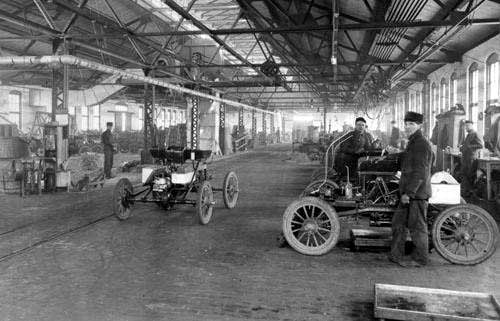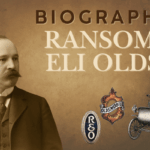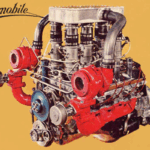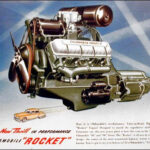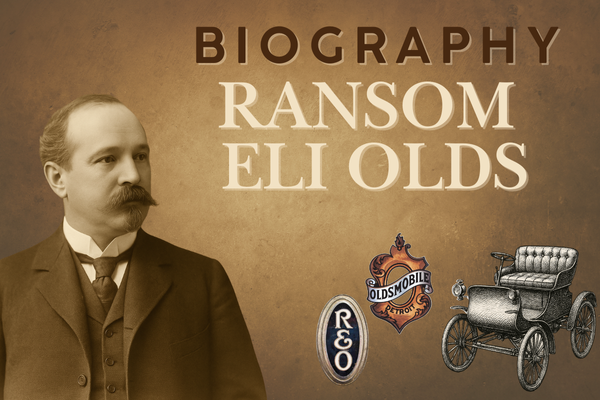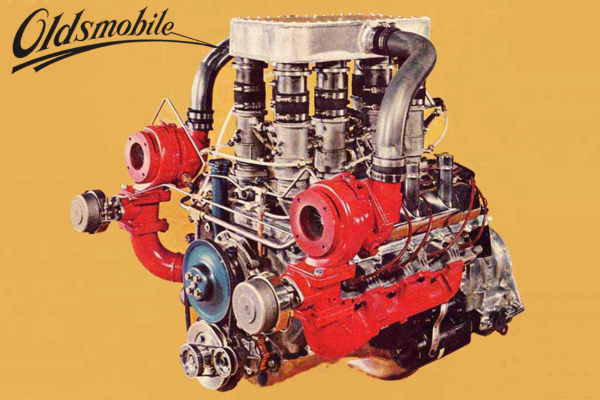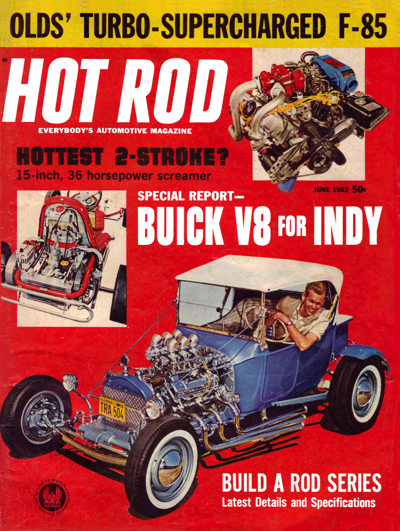The Oldsmobile Story
Oldsmobile is the oldest continuing car marque in the US. The Olds Motor Company was incorporated in 1897 and was founded by Ransom E. Olds with an initial capital investment of $50,000.00, a considerable sum back then. In that year, the company produced 4 automobiles.
Oldsmobile operated as an independent company until its puurchase by General Motors in 1908. For the remainder of its existence it operated as the Oldsmobile Division of General Motors. In its 107-year history, it produced over 35 million cars; with at least 14 million built at its Lansing, Michigan factory.
When it was phased out by GM in 2004, Oldsmobile was the oldest surviving American automobile marque, and one of the oldest in the world.
1897 – 1977
Oldsmobile has the longest historical trail of the existing domestic car builders. Over the years the Lansing, Michigan-based General Motors’ division offered a genuine variety of automobiles and even a few trucks. Oldsmobiles have rolled the roads since 1897.
Success came to the company early and just after the turn of the century Oldsmobile was the most popular car on the road. Several editions of the nimble little Curved Dash model were marketed. Like other General Motors division namesakes David Buick and Louis Chevrolet, Ransom Eli Olds left the firm carrying his name in the early going. Unlike Mssrs. Buick and Chevrolet, Olds made a successful re-entry into the automotive field and by 1905 his new firm REO was working its way up the automotive ladder.
Joining the fledgling General Motors group in 1908, Oldsmobile slipped into the lower-production, high-quality automotive realm through the early 1920s. After a series of six-cylinder cars built to more modest price standards from the early 1920s through 1928, Olds introduced a companion car in 1929. The new line was called Viking and came upon the scene in the worst of times with an overcrowded marketplace and economic Depression. By 1930 the Viking was just a somewhat bitter memory.
In 1933 things looked so bleak for General Motors that serious consideration was given to combining or eliminating Buick, Oldsmobile or Pontiac. Things gradually got better for the US economy, however, and GM retained all of its automotive arms. Through the shortened 1942 model year Olds offered first two and then three automotive series, powered by a L-Head six or eight-cylinder inline motor. For most of this time Oldsmobile was content to hold a sales slot near the bottom rung of the industry’s top ten, offering solid, if unspectacular, transportation.
The lone indication of things to come began with the introduction of the Hydrostatic transmission in 1940. For years the auto industry had flirted with the fully automatic transmission. Co-developed with Cadillac but introduced by Olds first, the Hydramatic was not the first automatic, but up until that point, it probably was the best. Several years before Oldsmobile had shared with Buick the so-called ‘Safety Automatic Transmission. It was really a semi-automatic unit and had very limited marketing success. The Hydramatic caught on quickly and soon Cadillac was offering it as well.
Like most of the established car-building firms, Oldsmobile hit the postwar streets with warmed-over 1942 models labeled as 1946s. The same was true in 1947 and for the 6o and 70 series of 1948. It was a different story and a strong indication of things on the immediate Oldsmobile horizon with the 1948 Ninety-Eight models. For the 1948 98s an all-new styling package called “Futuramic” was introduced.
In 1949, Futuramic styling got the under-hood boost it deserved, the new high-compression overhead valve “Rocket V-8” engine. Coupled with the time-proven Hydramatic, the real postwar Oldsmobiles were dynamite. A big-engined/small-bodied Rocket 88 Series was King of the Road and a champ of the budding NASCAR stock car racing circuit in the early 1950s.
Gradually, Oldsmobile was upstaged in the performance arena by the Chrysler Hemi and the high-winding small block Chevrolet V-8. Oldsmobile continued to offer a variety of pleasing, well-styled, and popular cars through 1956. In 1957 Oldsmobile made another move into the high-performance arena. Divisional engineers elected to fight the competition’s more exotic and more expensive fuel-injection and supercharging systems with a tri-carb-based J-2 option available on most 1957 and 1958 models.
In 1961 two big developments came from the Oldsmobile camp. The personal luxury Starfire bowed as a convertible with a companion hardtop added in 1962 and the folks from Lansing also joined the General Motors’ compact car parade with their F-85/Cutlass Series. Dramatically, in 1962 and 1963, the Cutlass could be had with a turbocharged aluminum V-8, called the “Jetfire”.
In 1964, the now famous A-body mid-sized GM cars would replace the smaller offerings, and Oldsmobiles formula for sales bore an immediate success. Eventually, the Cutlass nameplate would grow into the best-selling single model of the 1970s.
By the early 1960s Oldsmobile was on the move upwards on many sales and engineering fronts. An innovative chief engineer named John Beltz would move into the general manager’s chair in this era. A lot of great automotive concepts were advanced by this auto enthusiast/executive.
In 1964 Oldsmobile made a bold move back into the high-performance field with its 4-4-2 package. First as an F-85/Cutlass option, later as a full-fledged series, this Oldsmobile intermediate package was a real hit with the performance crowd. For those seeking a bit more zing, the potent W-cars were offered in the late 1960s. Finally, buyers who wanted to taste more luxury with their high-performance Cutlass were tempted by the limited-production Hurst/Oldsmobiles.
One of the uniquely different cars of the postwar era emerged from Oldmobile, in 1966, with the introduction of the front-wheel-drive Toronado. This quickly became the Oldsmobile banner-carrier on the personal/luxury front while the Starfire was dropped. The Toronado garnered a basket full of engineering awards.
By the 1970s the Cutlass had grown into a powerful market force beyond the high-performance arena covered by the W-cars, Hurst/Olds and 4-4-2. This position got even stronger with the introduction of the Colonnade styled Cutlass Supreme coupe in 1973. Coupled with solid sales performances from the traditional Eighty-Eight and Ninety-Eight models and a boost from the addition of the smaller Omega and new Starfire, Oldsmobile rode into third place in the industry sales race.
Oldsmobile Logo Early
The Early Oldsmobile Logo. The logo remained unchanged until the release of the famous “Rocket V-8”.



